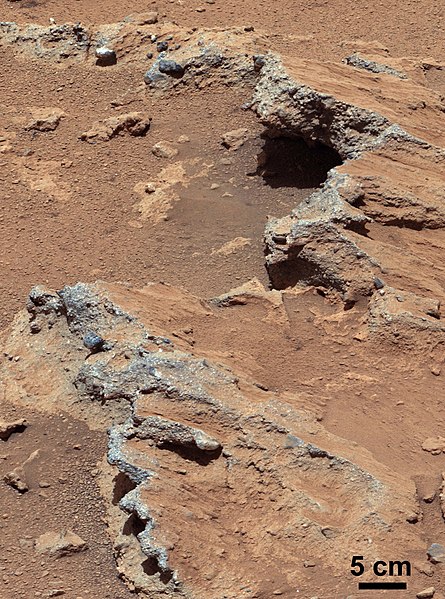Archivo:PIA17062-MarsCuriosityRover-HottahRockOutcrop-20120915.jpg

Tamaño de esta previsualización: 445 × 599 píxeles. Otras resoluciones: 178 × 240 píxeles · 357 × 480 píxeles · 571 × 768 píxeles · 761 × 1024 píxeles · 1522 × 2048 píxeles · 4372 × 5883 píxeles.
Ver la imagen en su resolución original (4372 × 5883 píxeles; tamaño de archivo: 6,85 MB; tipo MIME: image/jpeg)
Historial del archivo
Haz clic sobre una fecha y hora para ver el archivo tal como apareció en ese momento.
| Fecha y hora | Miniatura | Dimensiones | Usuario | Comentario | |
|---|---|---|---|---|---|
| actual | 19:56 10 ene 2019 |  | 4372 × 5883 (6,85 MB) | Kesäperuna | 100% JPEG quality from full quality TIFF. |
| 23:32 30 may 2013 |  | 4372 × 5883 (2,49 MB) | Drbogdan | User created page with UploadWizard |
Usos del archivo
Las siguientes páginas usan este archivo:
Uso global del archivo
Las wikis siguientes utilizan este archivo:
- Uso en ar.wikipedia.org
- Uso en ca.wikipedia.org
- Uso en de.wikipedia.org
- Uso en el.wikipedia.org
- Uso en en.wikipedia.org
- Adirondack (Mars)
- Heat Shield Rock
- Yogi Rock
- Home Plate (Mars)
- List of rocks on Mars
- Bounce Rock
- Barnacle Bill (Martian rock)
- Pot of Gold (Mars)
- El Capitan (Mars)
- Last Chance (Mars)
- Geology of Mars
- Martian soil
- Oileán Ruaidh (Mars rock)
- Composition of Mars
- N165
- Jake Matijevic (rock)
- Bathurst Inlet (rock)
- Hottah (Mars)
- Link (Mars)
- Goulburn (Mars)
- Rocknest 3
- Shelter Island meteorite
- Block Island meteorite
- Mackinac Island meteorite
- Tintina (rock)
- User:Drbogdan/sandbox-templates-Geology-MarsRocks-MoleculesInSpace
- Template:MarsRocks
- Wikipedia talk:WikiProject Portals/Design/Archive 3
- Uso en kw.wikipedia.org
- Uso en oc.wikipedia.org
- Uso en pl.wikipedia.org
- Uso en sv.wikipedia.org
- Uso en th.wikipedia.org
- Uso en uk.wikipedia.org
- Uso en zh.wikipedia.org
Ver más uso global de este archivo.


